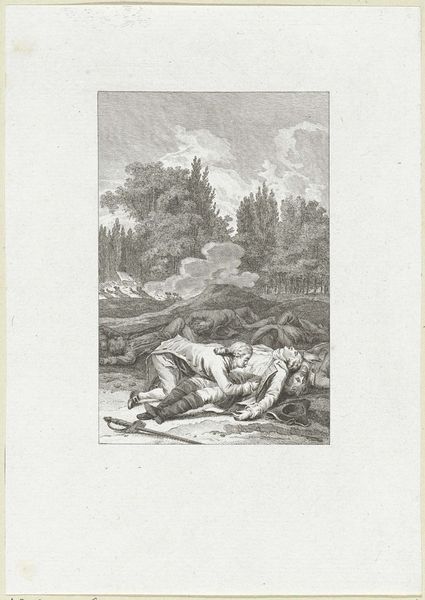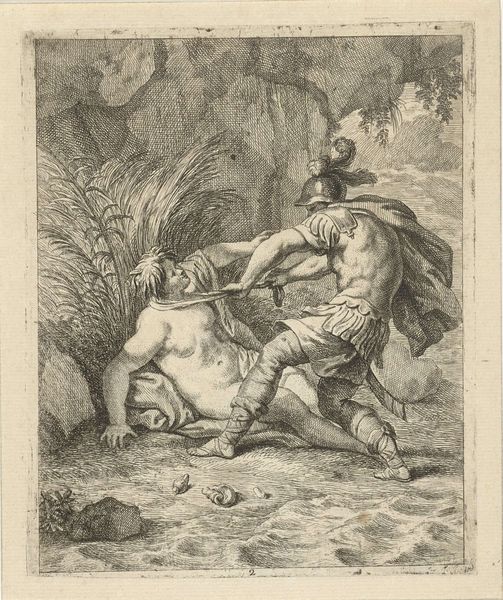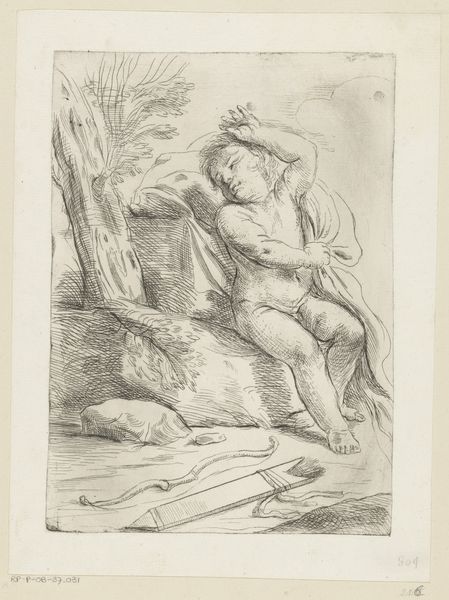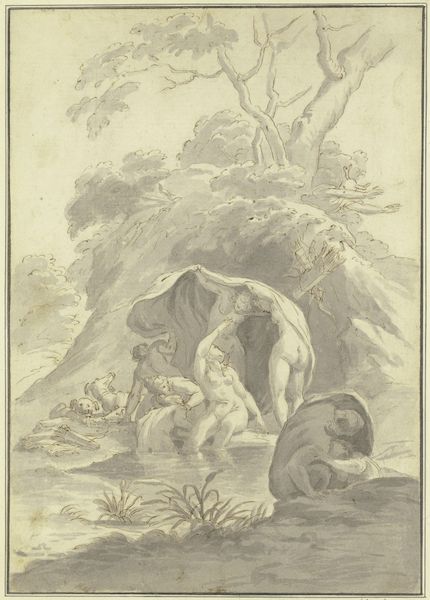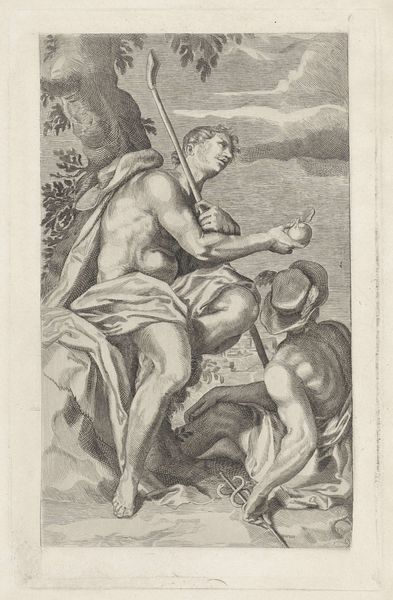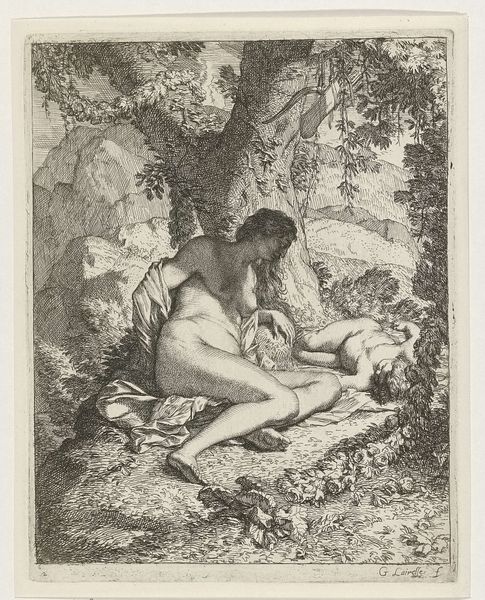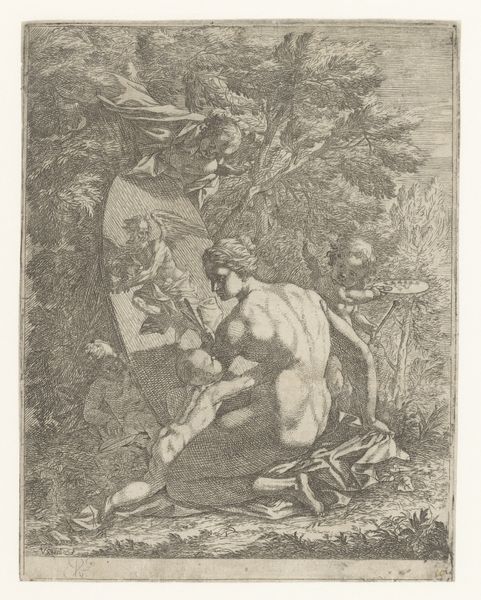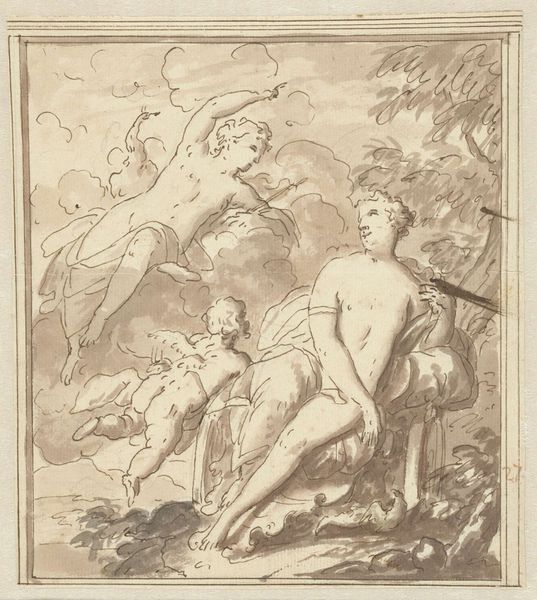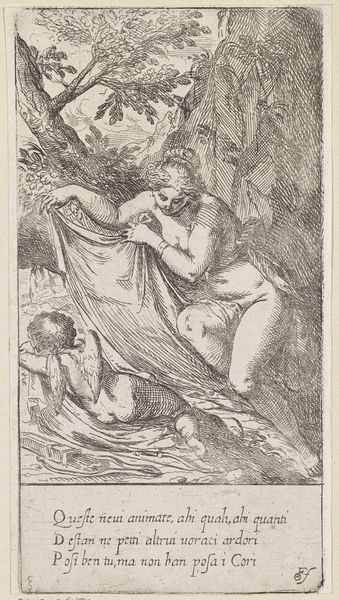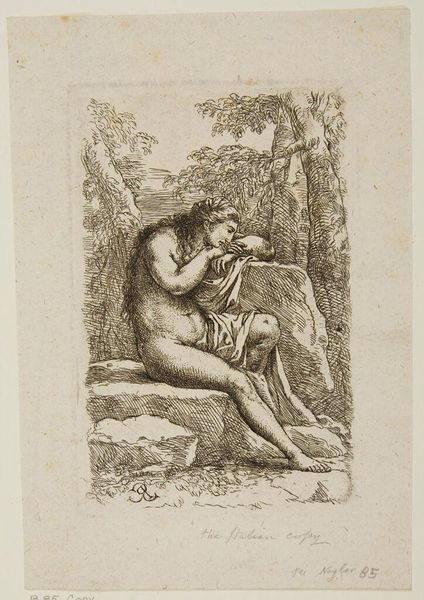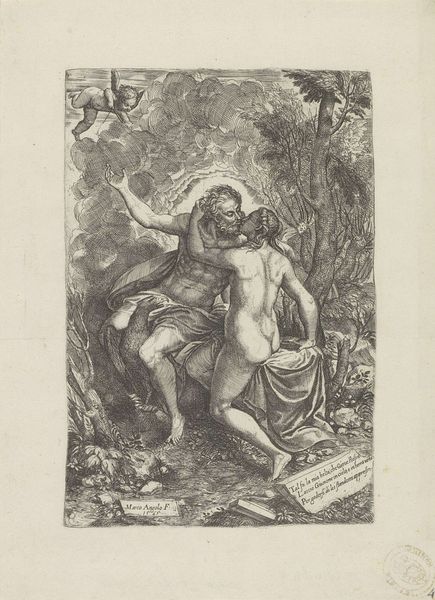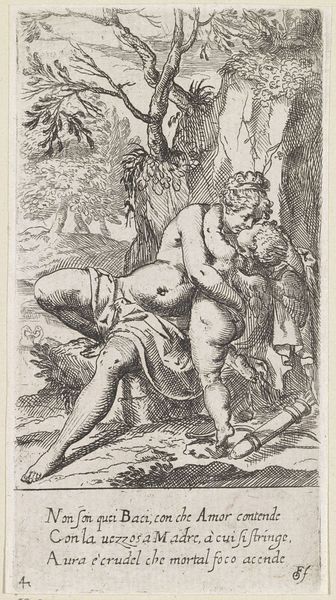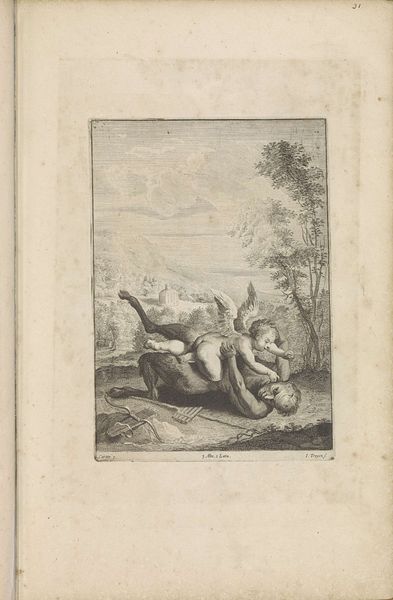
print, etching
#
baroque
# print
#
etching
#
landscape
#
figuration
Dimensions: height 280 mm, width 192 mm
Copyright: Rijks Museum: Open Domain
Curator: Look at this engraving; it feels so incredibly intimate and mournful. Editor: Indeed. This etching, crafted by Jacob Matham between 1600 and 1604, portrays the penitent Mary Magdalene in a landscape setting. I'm curious about your immediate reading of its somber quality. Curator: The visual vocabulary really speaks to me. Her clasped hands, averted gaze… that skull nearby and small crucifix propped against some book are heavy with symbolic weight. It seems to speak of repentance, a turning away from worldly vanity. Editor: Precisely. The iconography is rich. You've identified elements like the skull, a traditional memento mori, that highlight this sense of religious meditation, but let’s think about the making. It’s all etching, so layers of wax resist protect some parts of the plate and not others. He's used fine lines to build depth. The textural differences, those darks versus almost pure whites, shape a mood. Curator: It gives it an almost fragile quality, which enhances the feeling of vulnerability. Speaking of which, her garments appear both opulent and disheveled, hinting at her past life juxtaposed against her present humility. Even her untamed hair feels significant, symbolizing both wildness and sorrow. Editor: I would also suggest thinking about the process of printmaking and its capacity for widespread distribution. This piece isn't just a devotional image, but one aimed at larger audiences, reproduced in multiples and thus bringing Matham's technical and symbolic capabilities to far more people than painting would allow. And look, isn't there some ambiguity to what is nature versus architecture that serves this kind of redemptive trope? Curator: Absolutely. Her physical separation, and thus that of viewers, creates a psychological distance from temptation; her physical and emotional travail feels raw in its detail, though it feels as though her physical burden and state are self-imposed... And I see what you mean: she retreats away into a more raw landscape which is juxtaposed against her garments, the book she reads, all products of advanced social labor. Editor: Indeed. Examining these interwoven levels, Matham displays how a physical location and visual codes operate and the materiality makes possible an image of penitence to travel and disseminate this message effectively. Curator: Reflecting upon our discussion, I think it's a poignant illustration of how material execution elevates Matham’s creation into more than a beautiful form; this piece serves also as a cultural meditation that allows a widespread culture of thinking about symbols. Editor: And from an iconographic perspective, understanding the manufacturing details informs my view on not only the message but to whom Matham felt he spoke, and through which medium he may.
Comments
No comments
Be the first to comment and join the conversation on the ultimate creative platform.
